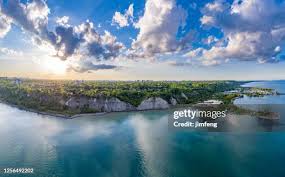The Legacy of Red Sternberg in Canadian Wildlife Art

Introduction
Red Sternberg, a name synonymous with Canadian wildlife art, has profoundly influenced the artistic landscape with his intricate and lifelike representations of animals. His work not only showcases the beauty of the Canadian wilderness but also raises awareness about conservation issues, making his contributions critically important in today’s environment. As discussions around wildlife conservation continue to gain momentum, Sternberg’s art serves as a vital connection between nature and society.
Background and Artistic Journey
Born in the heart of Alberta, Canada, Sternberg developed a passion for nature and painting at a young age. After studying at the Alberta College of Art and Design, he combined his love for wildlife with his skills in painting. His early years were spent honing his talent in realistic portrayals of animals, often venturing into the wild to observe his subjects up close. This on-location experience has allowed him to infuse authenticity into his work, captivating audiences around the country.
Artistic Style and Techniques
Red Sternberg’s unique artistic style is characterized by vibrant colors, dynamic compositions, and a keen attention to detail. His use of oils and watercolors allows him to create textures that mimic the fur and feathers of his animal subjects, providing a lifelike quality that resonates with viewers. Sternberg’s choice of themes often revolves around the flora and fauna of the Canadian landscape, illustrating species both on land and in water. Notable works include stunning portrayals of moose, bears, and birds, each piece telling a story of the ecosystem they inhabit.
Impact and Recognition
The impact of Red Sternberg’s work extends beyond the gallery walls. He has been involved in numerous exhibitions and has contributed to various wildlife conservation projects, using his art to raise funds and awareness for threatened species. His work has been featured in prestigious institutions, further solidifying his reputation as a leading wildlife artist in Canada. In addition to exhibitions, Sternberg has received several awards acknowledging his contributions to the art world and wildlife conservation efforts.
Conclusion
As Red Sternberg continues to create, his influence on wildlife art and environmental consciousness grows. His artistic legacy is not just in the beauty of his paintings but also in his ability to inspire dialogue about conservation. For art lovers and nature enthusiasts alike, Sternberg embodies the connection between art and nature, reminding us of the importance of preserving our natural heritage for future generations. Readers are encouraged to explore his work, engage with conservation efforts, and appreciate the intricate balance of life that his art exemplifies.








